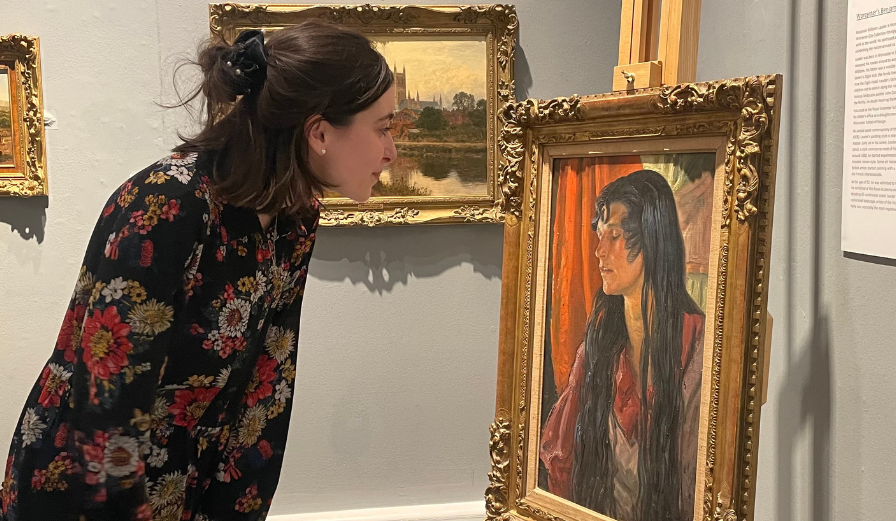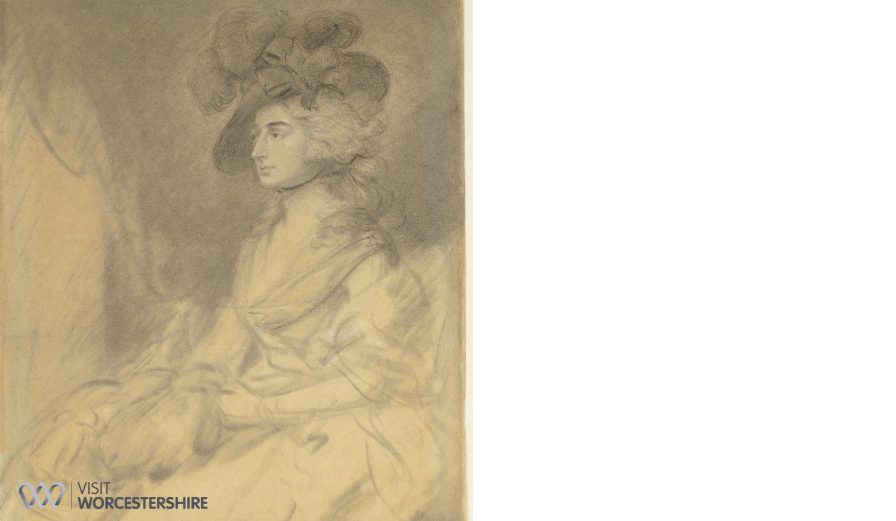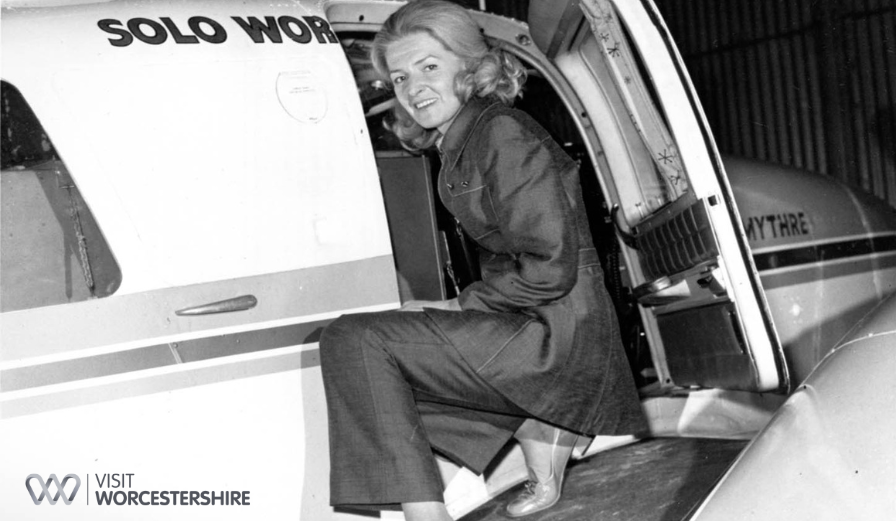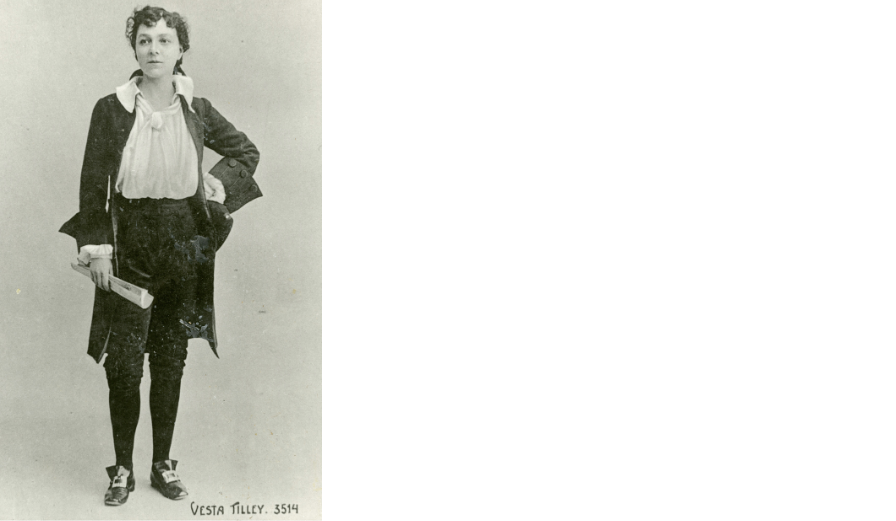Æthelflæd, Lady of Mercia – The Forgotten Warrior Queen
Step back to the Anglo-Saxon age and you’ll find one of Worcestershire’s greatest figures Æthelflæd, Lady of Mercia and daughter of Alfred the Great. Ruling from 911 to 918 and played a pivotal role in defending England against Viking invasions. She fortified towns, including Worcester, and was respected as both a formidable military leader and a powerful female ruler. Yet, despite her achievements, history often overlooks her. Æthelflæd remains one of Britain’s forgotten heroines, but here in Worcestershire, her story is part of our proud heritage.
Catherine Moody – Artist
Catherine Olive Moody (1920-2009) was a highly influential artist, educator, and writer based in Malvern, Worcestershire. As Head of Malvern School of Art from 1962 to 1980, she shaped local arts education and was known for her pastel works, portraits, and architectural illustrations. A passionate advocate for local heritage, she authored Silhouette of Malvern (1953) and Painter’s Workshop (1982) and was actively involved in community life through the Malvern Art Club, Malvern Writers’ Circle, and the Malvern Architectural Society. Her contributions to art, education, and civic culture left a lasting legacy, celebrated through exhibitions and the preservation of her archive by Worcester City Museum.
Dame Laura Knight – Inspired by the Malvern Hills
One of Britain’s most acclaimed female artists, Dame Laura Knight, found inspiration in Worcestershire’s Malvern Hills. Spending much of her life in the area, especially during the Second World War, her dramatic landscapes captured the beauty and spirit of the county.
Celebrated British artist Dame Laura Knight drew lasting inspiration from Worcestershire’s Malvern Hills. Invited in the early 1930s by her friend Sir Barry Jackson, director of the Birmingham Repertory Theatre, she attended the Malvern Dramatic Festival founded by Jackson and George Bernard Shaw in 1929 and returned year after year to paint the surrounding scenery.
When the final festival ended in 1939 and war threatened London, Laura and her husband settled in Malvern, where the hills shaped some of her most atmospheric work throughout the 1930s and 1940s.
Her legacy will be celebrated in the upcoming British Impressionism Gallery at Worcester City Art Gallery & Museum, where her evocative landscapes will continue to inspire.

Hannah Snell – The Soldier in Disguise
Hannah Snell, born in Worcester in 1723, was a woman who refused to be confined by expectations. Disguising herself as a man, she enlisted in the army and went on to serve with distinction during the Jacobite uprising of 1745. Marching and fighting alongside her comrades in the Sixth of Foot (later the Royal Warwickshire Regiment), she proved her courage on the battlefield. Her daring disguise and fearless service made her one of the most extraordinary figures in military history.
Jenny Lind – The Swedish Nightingale in Malvern
Born in 1820, the world-famous soprano Jenny Lind, known as “The Swedish Nightingale,” spent her final years in Worcestershire. After dazzling audiences across Europe and America, she settled at Wynd’s Point in Malvern, where she lived until her death in 1887. Her legacy is still celebrated locally, from the all-female choir The Jenny Lind Singers to memorials in Great Malvern.
Mary Sidney – Patron of the Arts
Born in Bewdley in 1561, Mary Sidney, Countess of Pembroke, was one of the first English women to gain a truly significant literary reputation. Too often overshadowed by her brother, the acclaimed Elizabethan poet Sir Philip Sidney, Mary carved out her own remarkable place in history. A gifted poet, translator, and influential patron of the arts, she nurtured talent and creativity at a time when women were rarely recognised for their intellectual achievements.
Sarah Siddons – The Theatrical Starlet
Worcester also nurtured the talents of Sarah Siddons (1755-1831), who would go on to become one of Britain’s most celebrated actresses. Educated at Thorneloe House in Worcester, Siddons performed her first play in the city, where her theatrical journey began. Today, a blue plaque in Worcester commemorates her early ties to the county and her lasting impact on British theatre.

Sheila Scott – The Sky’s the Limit
Sheila Christine Scott OBE (1922–1988) was one of Britain’s most daring and determined aviators and she began her incredible journey here in Worcestershire. Over the course of her career, she broke more than 100 aviation records, pushing the limits of what was thought possible in the skies. In 1966, she became the first British person, and only the third woman in history, to fly solo around the world. Not one to rest on her laurels, she went even further in 1971, completing her legendary 34,000-mile 'world and a half' flight. On this adventure, she made history as the first person ever to fly over the North Pole in a small aircraft. Scott’s fearless spirit and trailblazing achievements placed her firmly among the greats of aviation – an extraordinary woman who carried Worcestershire’s name across the skies and into the record books.

Vesta Tilley – The Queen of Male Impersonators
Born in Worcester in 1864, Vesta Tilley became one of the most famous male impersonators of all time. At the height of the Victorian and Edwardian music hall era, she was one of the highest-paid performers in Britain. With six successful tours of the United States and adoring audiences on both sides of the Atlantic, Tilley’s sharp wit, charm, and daring stage presence made her a household name. She redefined performance at a time when gender roles were strictly policed a true pioneer who lived life on her own terms.

From warriors and soldiers to performers, writers, pilots, painters and politicians Worcestershire’s women have left their mark across the centuries. They were rebels who defied expectations, visionaries who shaped culture, and leaders who protected their people. Their stories remind us that Worcestershire’s history is not just rich it’s remarkable.
